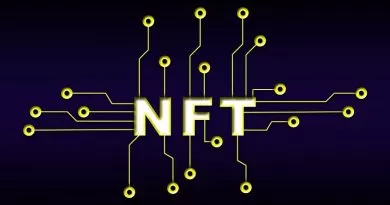Blockchain Domains ‘The Next Big Threat’
Blockchain domains are still not widely used, and most of these use cases will only become a part of our everyday reality in the near future, once Web3's promise is fully realized and perhaps even Mark Zuckerberg's Metaverse begins to feel less like a Matrix concept and more like a substantial, practical truth.
Unstoppable Domains founder and CEO Matthew Gould founded the company because “for too long, companies have controlled people’s digital identities, and it’s time for people to own their identity on the internet.”
As far as mission statements go, it’s quite powerful – but it’s also deeply rooted in current reality: Unstoppable Domains is a blockchain naming service with over 2.5 million registered domains that recently achieved unicorn status with a $1 billion valuation.
Blockchain Domains Should Be Avoided
Microsoft describes blockchain domains as a “emerging threat outside of regulation” in its October 2021 Digital Defense Report. Of course, as the report continues to explain, it is referring to “threat actors on the internet (that) have begun utilizing blockchain domains as part of their cybercriminal infrastructure and operations,” which is a common complaint leveled against blockchain-related activities and products such as cryptocurrencies. It remains to be seen whether decentralized finance facilitates fraud or malware more than traditional finance.
However, the report states a few paragraphs earlier that “blockchain domains work differently (than) traditional domains that are purchased through internet registrars operating through the ICANN-regulated DNS system and pose challenges in terms of utilization and disruption.” That is something we can all agree on. Blockchain domains present a challenge for companies that, in the words of Matthew Gould, have “for too long controlled people’s digital identities,” as well as a uniquely timed opportunity for disruption.
Domain Knowledge in Blockchain
Domains built on blockchain technology are immutable and tamper-proof due to their completely decentralized nature, and they give users more control over their online spaces and identities. Apart from not having recurring web hosting or domain renewal fees, as with most blockchain name services, the technology is resistant to censorship, regulations, or even attempts to block it.
When the 2019 IDC survey results (opens in new tab) show that 82% of companies experienced a domain name system (DNS) attack in the previous year and 63% experienced application downtime, each of which cost an average of $1.07M, the security benefits appear to outweigh the disadvantages.
Furthermore, the 2022 Freedom in the World report, aptly titled ‘The Global Expansion of Authoritarian Rule’ states that “autocracy is making gains against democracy and encouraging more leaders to abandon the democratic path to security and prosperity,” with a net two-to-one increase in countries suffering from democratic declines over the past year compared to those that improved. This, too, would indicate the need for online protection from authoritarian states, which could take the form of blockchain technology and seemingly outweigh any potential downside.
Domains That Are Decentralized
In some ways, domains are equivalent to social media handles, at least for brands that need to maintain tone and presence across all platforms, but with one key difference: in the case of Instagram and Twitter, brands could appeal to the platform to gain control over a “branded account from someone not associated with the brand,” aka whoever registered the username @JimmyFallon or @Puma and then attempted to extort the real Jimmy Fallon (who owns fallon.eth) or However, in the blockchain universe, this is not the case and will never be.
Transactions are final and irreversible, and while you can rent subdomains under your main blockchain domain, no one can force you to relinquish control over the domain you secured and are legally the owner of. And, while blockchain domains have been around for a few years, since 2011, their value has been exploding. That is, the longer people and brands wait, the more money they will have to pay to be a part of Web3 – and this is not a new reality. Matt Blaze, a professor of computer and information science at the University of Pennsylvania, had the foresight to purchase the top level domain crypto.com in 1993 and then sell it for $12 million in 2018.
Is There A Genuine Danger?
Once they can safely store personal information, they will eventually replace email addresses, bank accounts, and much more. Self-Sovereign ID blockchains, such as Concordium, can be indirectly linked to real identities and used to login to anything and anywhere with a single click. They can also be used to create apps and software by utilizing blockchain-specific platforms and frameworks.
Of course, blockchain domains are still not widely used, and most of these use cases will only become a part of our everyday reality in the near future, once Web3’s promise is fully realized and perhaps even Mark Zuckerberg’s Metaverse begins to feel less like a Matrix concept and more like a substantial, practical truth. Issues such as the need for browser plug-ins or proxy resolution services, as well as limited SEO visibility (opens in new tab), are still being ironed out. However, the possibility of disruption is already apparent.
“How much can we get out of blockchain technology?” will become clearer as we move toward a decentralized Web3. In many ways, we have already begun: with the recent cryptocurrency boom, the proliferation and meteoric rise in popularity of NFTs, and Facebook’s rebranding as Meta, we are about to enter a digital future we cannot even imagine. That may sound frightening to some, as in the case of Microsoft.
But, once you truly understand what blockchain technology can do and how it can shape humanity’s future, fear gives way to excitement. The thrill of novelty and innovation. The thrill of growth. What a stimulating and fascinating experience. What’s the danger in that?




